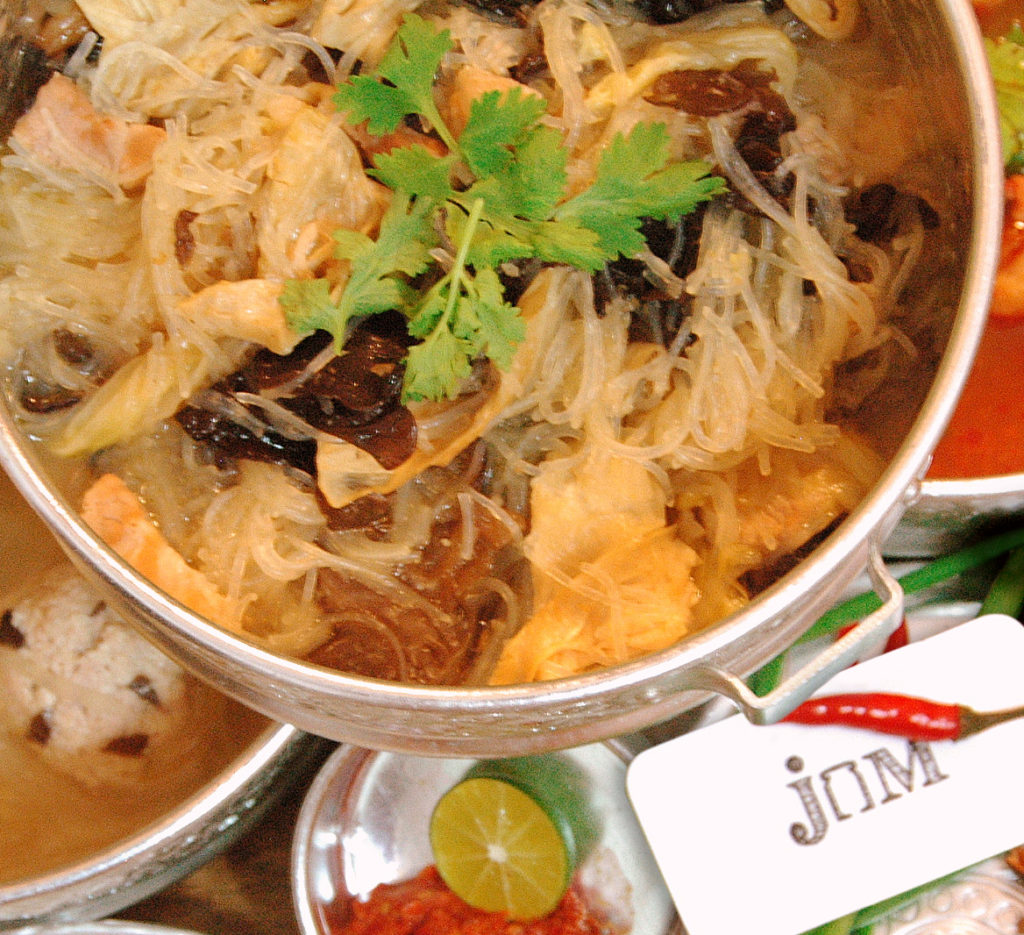Peranakans in Singapore
Meaning ‘local born’ in Malay, Peranakans generally refer to those of mixed Chinese and Malay/Indonesian heritage. Many can trace their ancestry to Chinese traders who married local Southeast Asian women and some have retained some of their cultural practices (e.g. women wear nonya kebayas and men wear batik for weddings) up till today. In Singapore, most of the Peranakan community is Peranakan Chinese, where males are known as Babas and the females, Nonyas.
About Chap Chye
Chap Chye (mixed vegetable stew) is a traditional Nonya dish that is enjoyed by Peranakans and non-Peranakans alike. Its recipe comes in many variations but generally speaking, it often includes cabbage, black fungus, lily flower buds, rice vermicelli, dried beancurd and various types of vegetables. Recipes for Chap Chye are often passed down from generation to generation, with many Peranakans associating the taste with home.
In this story, chef Jeremy Cheok shares his modern take on the chap chye which is a variation on the recipe provided by his aunt Florence Lim.

Chap Chye Recipe (Chef Version)
From: Jeremy Cheok, founder of Slake
This recipe is a variation of the traditional chup chye, with the presence of chilli, sweet potato vermicelli and fresh shiitake mushrooms. It isn’t the most authentic but is extremely tasty and satisfying while remaining very much identifiable as chap chye.
Ingredients (feeds 10):
1kg round cabbage, broken up by hand
200g carrot, sliced
200g fresh shiitake mushrooms, stalk trimmed and halved
200g sweet potato vermicelli, soaked
100g dried beancurd skin (tau kee), soaked and cut into bite sized pieces
100g sweet beancurd skin, soaked and cut into bite sized pieces
50g dried black fungus (mu er), soaked
50g dried lily flower (kim chiam), soaked and knotted
50g ground dried shrimp (hay bee)
150g pork belly, sliced thin
1.5 litres light chicken stock or water
100g fermented whole soy bean (tau cheo)
100g garlic
1 chilli padi
oil
salt
sugar
Directions:
1. Pound or blend the chilli padi, garlic and soybeans together into a smooth paste.
2. In a large pot, heat 5 tablespoons of oil and fry the pork belly until it begins to crisp up. Remove and set aside.
3. In the same oil, fry the paste till it becomes really fragrant and starts to caramalise.
4. Add the dried shrimp and fry for a further 2 minutes. This is essentially the most important step as this is your base. Good caramalisation of the garlic and soybeans will result in more complex flavours.
5. Return the pork belly into the pot, add the stock and bring to a gentle simmer.
6. Add in the carrot first, then the cabbage followed by the remaining ingredients except the vermicelli.
7. Cover and let the dish simmer gently for at least 40 minutes.
8. At this point you may leave the dish to cool and store in the fridge. It tastes better the next day. adjust flavours with sugar and salt.
9. Whether you have kept it overnight or not, bring the dish back to a simmer 10 minutes before you intend to serve it, adding in the vermicelli in the last 5 minutes before serving.
10. Serve with homemade sambal belacan and you have a heart warming dish good enough to eat with just some steaming hot rice.
Chap Chye Recipe (Family Version)
From: Florence Lim
This recipe is from Jeremy’s aunt Florence Lim who is a full blooded Nonya. The directions are the same as above but uses a more traditional list of ingredients.
Ingredients:
1kg round cabbage, broken up by hand
200g carrot, sliced
200g dried shiitake mushrooms, soaked, stalk trimmed and halved
200g bean vermicelli, soaked
100g dried beancurd skin (tau kee), soaked and cut into bite sized pieces
100g sweet beancurd skin, soaked and cut into bite sized pieces
50g dried black fungus (mu er), soaked
50g dried lily flower (kim chiam), soaked and knotted
50g ground dried shrimp (hay bee)
150g pork belly, sliced thin
1.5 litres light chicken stock or water
100g fermented whole soy bean (tau cheo)
100g garlic
oil
salt
sugar



